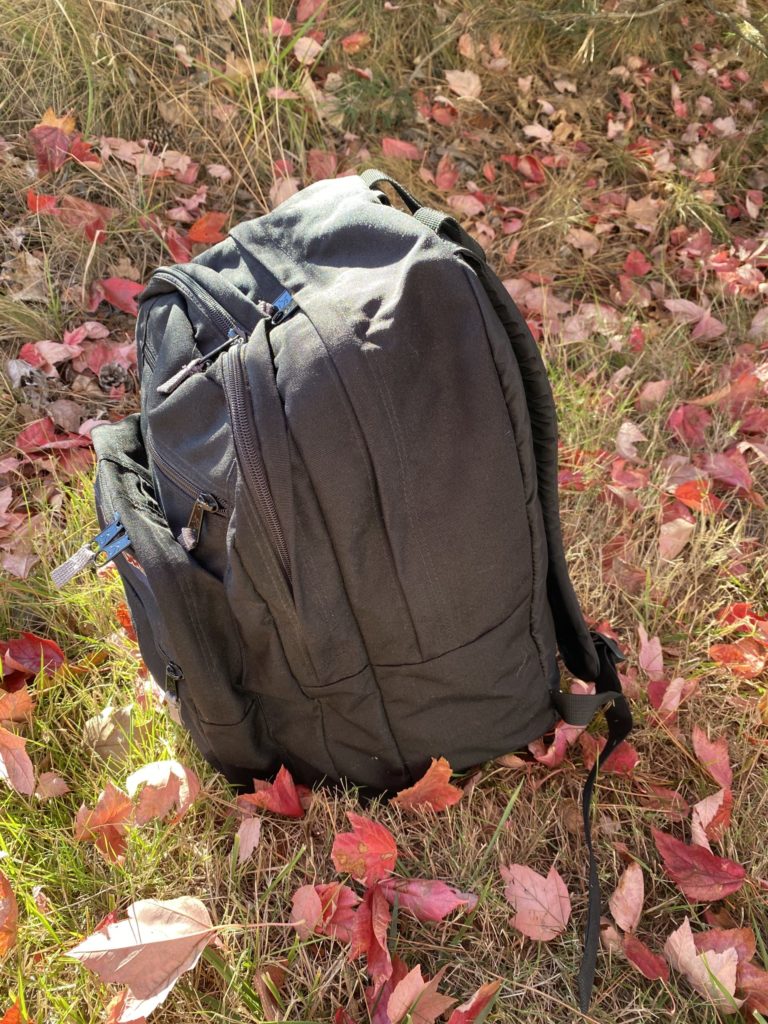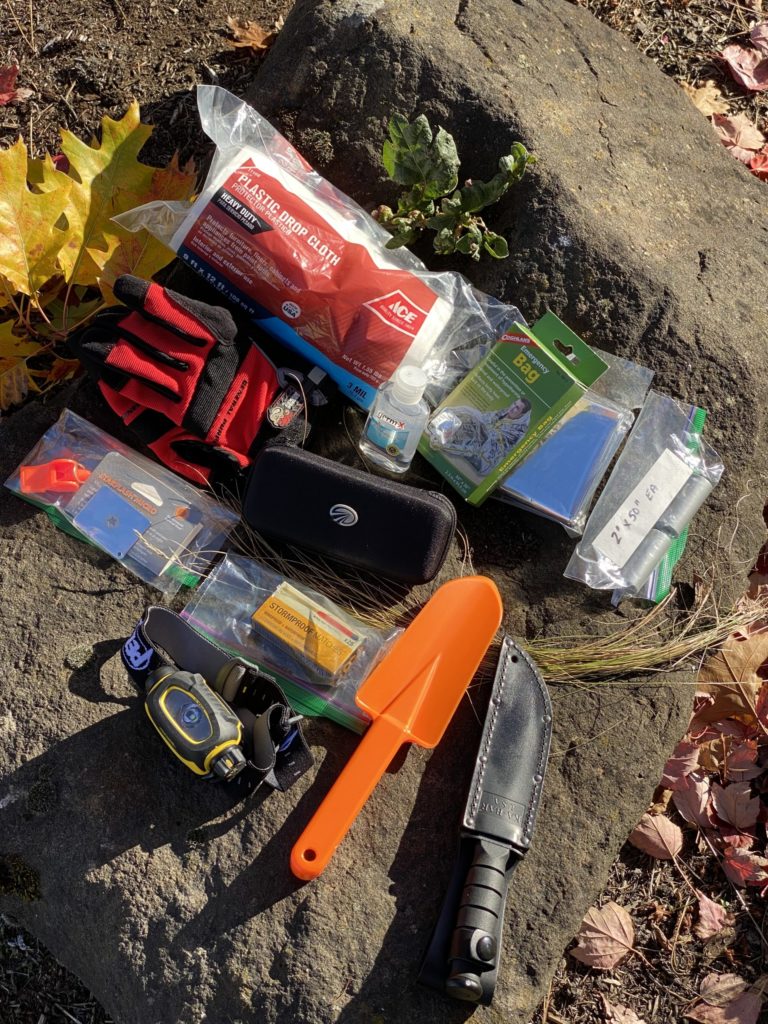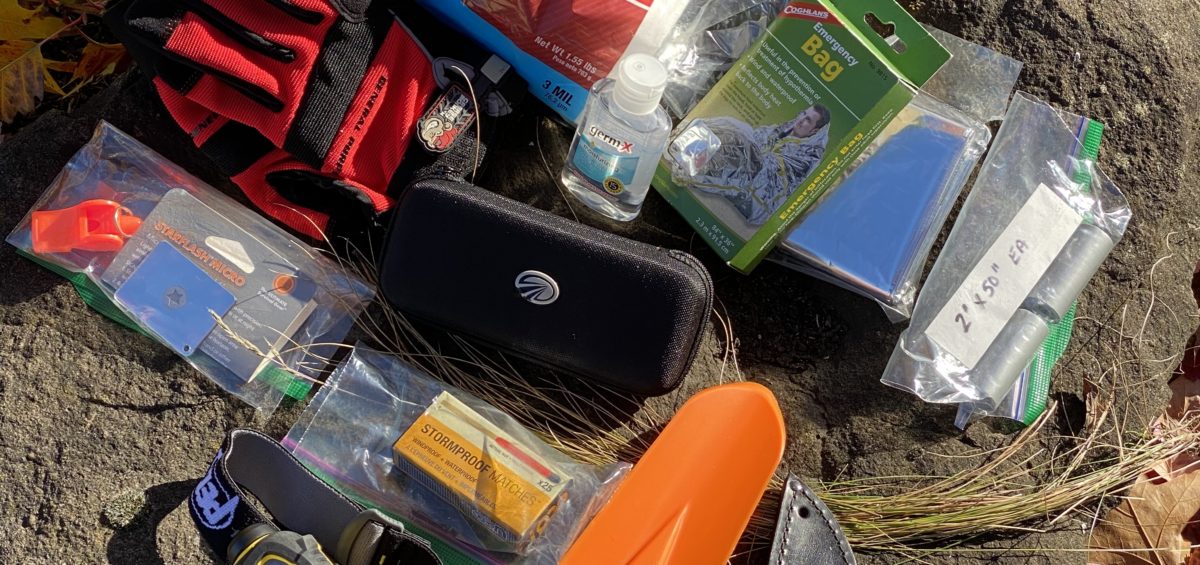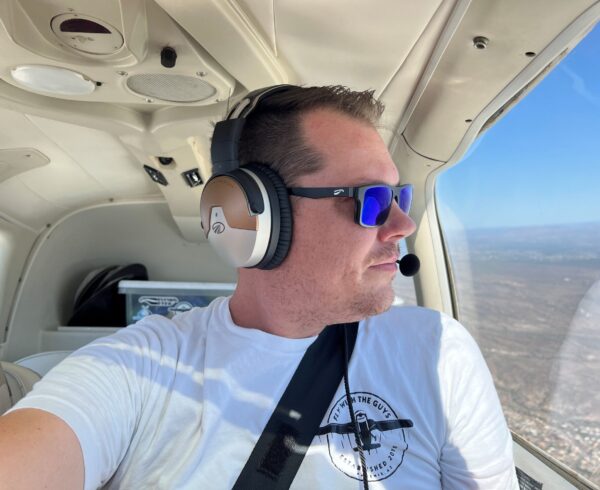As pilots, we train for emergencies that may lead to making an unexpected landing in an unexpected place. With sharp skills, good flight planning, a positive attitude, and a little luck, we make a survivable landing in a place that may be very remote. Assuming we executed the forced landing beautifully, what do you do next? This was the question posed by my (non-pilot) husband as he realized longer cross-country flights from Portland, OR often include some portion over mountainous terrain. He suggested I sharpen my survival skills to supplement the development of advanced piloting skills required in my recent Commercial certificate training.
“Sharpen” my survival skills is an overstatement. “Acquire” survival skills is a better descriptor. So, in this quest, I took more seriously the reality that it can take a search and rescue operation hours, and possibly days, to reach the landing site. With this in mind, what are the immediate things that should be done upon landing, and what minimum equipment and skills are necessary?
First, I learned about the basics: Shelter, Fire, Water, and Food in that order. Then I read and watched a number of books, articles, and videos to develop an understanding of survival techniques, assembled a “survival kit”, and practiced some of the skills I would use if ever finding myself in that situation. Like so many things in life, tackling a new set of skills is very empowering. I am certainly not over-confident and hope I will never actually have to put any of this new found knowledge to use, but being prepared is a confidence boost.

This is the first in a series of posts on the topic of general aviation survival, and it includes the items in a survival kit that I assembled. Subsequent posts will deal with the dynamics of making a good off-airport landing, electronics at our disposal that can help with SAR, and advice from SAR professionals.

The kit I assembled was designed assuming the conditions of a summer landing in the Coast or Cascade mountain ranges, and it all fits comfortably in a regular backpack (except for the floating cushion). Winter conditions would require more warm clothing.
The floating cushion weighs almost nothing and has multiple uses including protection from the yoke during impact, thermal protection, and more comfortable seating on the ground. It can also serve as a true flotation device in the event a creek or river crossing is necessary.

First aid tape, Neosporin, antiseptic wipes, sunscreen, clotting sponge, bug bracelet, Tylenol, band aids, lip balm

Includes: Plastic tarp, Survival sleeping bags, duct tape, work gloves, reading glasses, hand sanitizer, whistle, signaling mirror, waterproof matches, headlamp, shovel, fixed blade knife

Plastic water bottles and one metal container suitable for using over the fire, water purification tablets, high energy (and delicious for morale) snacks


Recognizing there is a possibility the plane can be damaged in such a way that retrieving the backpack may not be possible, I also wear this nifty 18 pocket vest stuffed with the most crucial items on me and the multi-function paracord bracelet so that when my passengers and I evacuate the aircraft, we have the bare minimum to survive.

The will to survive. There is no photo for this one, but many experts agree that this is a factor that can affect the eventual outcome the most. It seems like the best advice is to keep a positive attitude, plan your activities, and maintain determination.
I trust that many of you reading this are far more expert in this topic and we welcome your comments and suggestions in response!
Below are some of the resources I found particularly helpful. Please share any others you have found, and if you have experienced a survival situation or participated in a realistic survival course. Please help us add to the knowledge on this important and neglected topic and make us all safer pilots!
Additional resources (I have loaded many of these into my documents folder in ForeFlight):
CAMI 72 page survival training course for aviators
FAA YouTube series on Aircrew survival in various scenarios
AOPA Air Safety institute
Handy guide by Bear Grylls
FAR’s for overwater and Alaska backcountry
AS 02.35.110. Emergency Rations and Equipment
FAR 91.509 Survival equipment for overwater operations















Thank you, even in Aus we sometime forget things like this… Time to now look over what I have onboard
Who makes the vest you reference?
The company is called SCOTTeVEST https://www.scottevest.com/
Thanks Teresa. Good reminder to put a survival kit together for the RV14 we hope to be flying soon.
You’re welcome! We would love to see what you include in your survival kit, and your new airplane when it is ready!